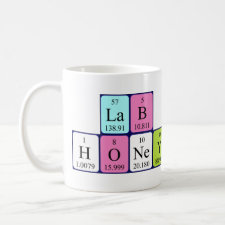
Authors: Gao BJ, Fu HY, Li YB, Du RK
Article Title: Preparation of surface molecularly imprinted polymeric microspheres and their recognition property for basic protein lysozyme.
Publication date: 2010
Journal: Journal of Chromatography B
Volume: 878
Issue: (21)
Page numbers: 1731-1738.
DOI: 10.1016/j.jchromb.2010.04.033
Alternative URL: http://www.sciencedirect.com/science/article/B6X0P-4YYRMSP-1/2/865701bc885fdb8115b425b938f1edd3
Abstract: The surface imprinting of basic protein lysozyme (Lys) was carried out by designing a new route. The copolymerization of N-vinylpyrrolidone (NVP) and 2-hydroxyethyl methacrylate (HEMA) was first conducted in an inverse suspension polymerization system, and the crosslinked copolymeric microspheres HEMA/NVP were prepared. Subsequently, the esterification reaction of methacryloyl (MAO) chloride with the hydroxyl groups on the surfaces of HEMA/NVP microspheres was performed, and the modified microspheres MAO-HEMA/NVP, on which a mass of polymerisable double bonds were introduced, were obtained. In the presence of lysozyme, by initiating of K2S2O8-NaHSO3, the monomer methacrylic acid (MAA) in the solution was crosslink-polymerized on the surfaces of MAO-HEMA/NVP microspheres, resulting in the surface imprinting of lysozyme. After removing the template molecules, the lysozyme molecule-surface-imprinted material MIP-HEMA/NVP was obtained. Because there were strong interactions between lysozyme and monomer MAA, electrostatic interaction and hydrogen bonding, the lysozyme molecule-surface imprinting was successfully realized. The MIP-HEMA/NVP microspheres have very high binding affinity for lysozyme, and the binding capacity gets up to 216 mg/g. It is more important that MIP-HEMA/NVP microspheres have specific recognition selectivity for lysozyme, and the selectivity coefficient for lysozyme with respect to bovine hemoglobin (BHb), which was used as a contrast protein in the experiments, actually reaches 31.07. In the respect of protein imprinting, the imprinting material with such high performance is unwonted
Template and target information: protein, lysozyme
Author keywords: lysozyme, surface imprinting, methacrylic acid, 2-hydroxyethyl methacrylate, Recognition selectivity



Join the Society for Molecular Imprinting

New items RSS feed
Sign-up for e-mail updates:
Choose between receiving an occasional newsletter or more frequent e-mail alerts.
Click here to go to the sign-up page.
Is your name elemental or peptidic? Enter your name and find out by clicking either of the buttons below!
Other products you may like:
 MIPdatabase
MIPdatabase









